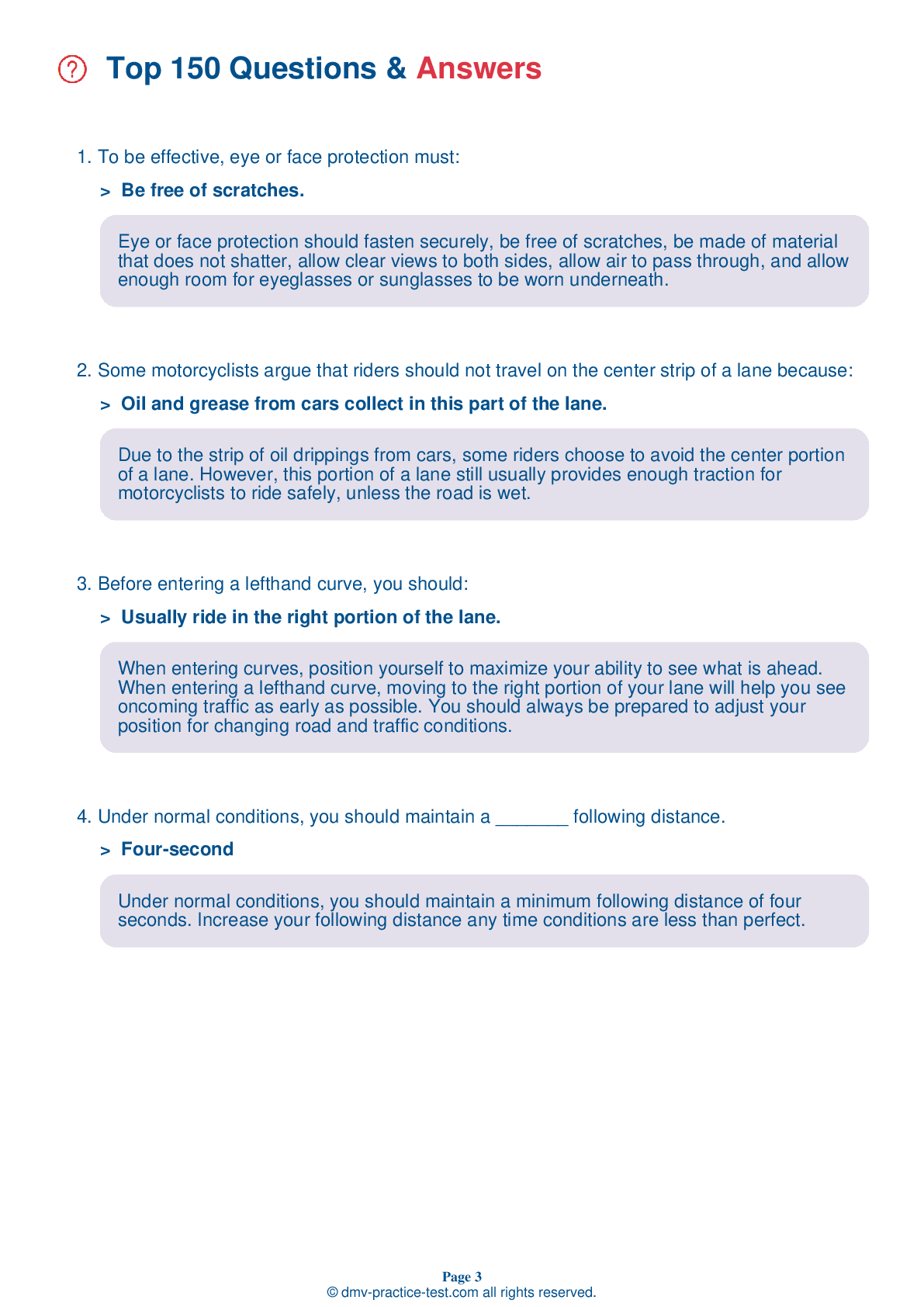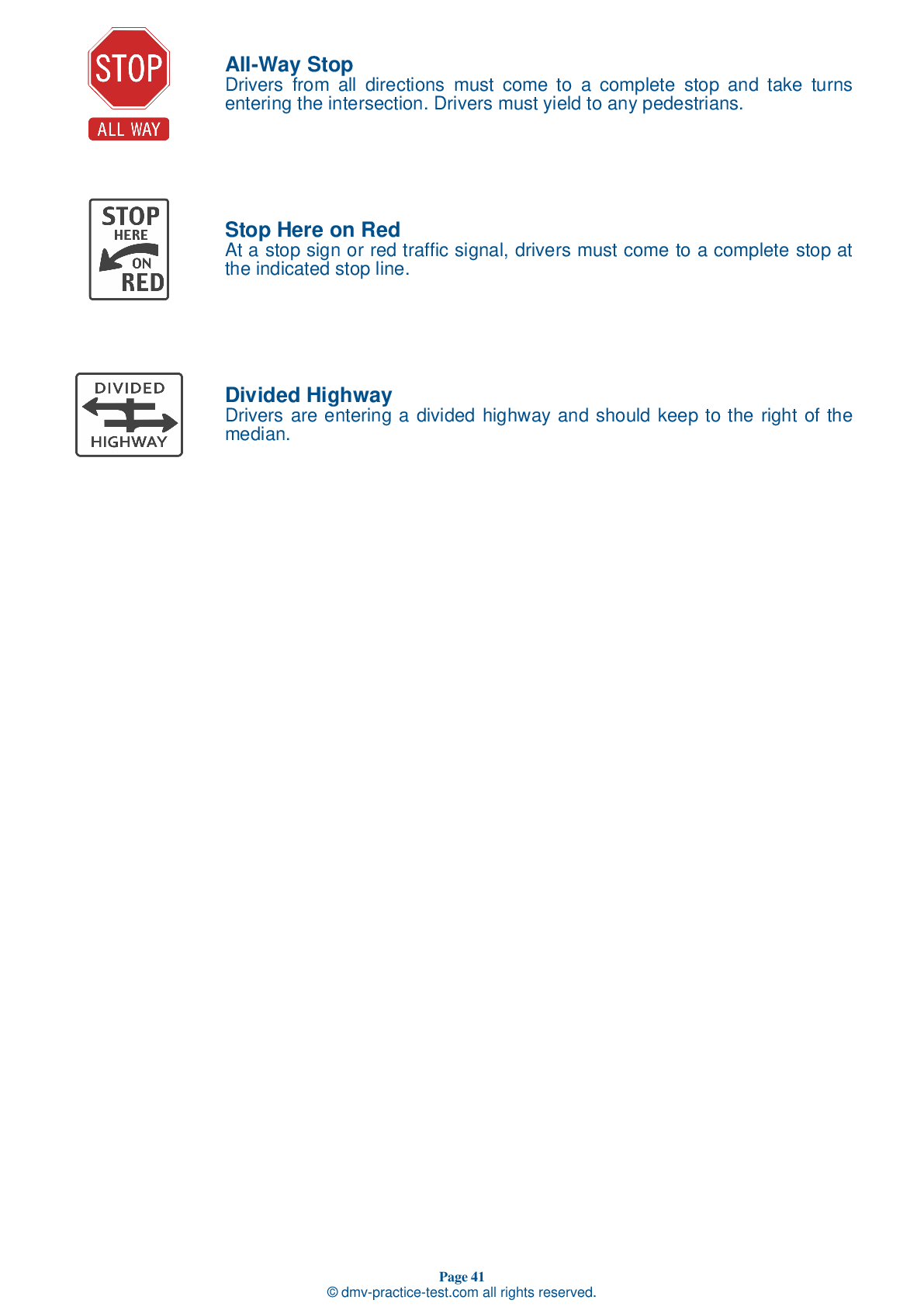Motorcycle Test | License AK 2025 | FREE Online Practice! #14
Take this FREE motorcycle test (license in AK 2025) to check your knowledge of the road rules. To improve your results, download a motorcycle handbook online, study theory, and practice for free on our website. Still worried about how to get a motorcycle license in Alaska in 2025? Check our website for more sample tests, train as much as possible, and boost your grades!
1 . Wearing which of the following colors can help you be seen by other drivers?
Wearing bright orange, yellow, or green clothing can help make you more visible to other road users.
2 . When riding at night, a motorcyclist should:
Riding at night can be dangerous because a rider’s ability to see and be seen by fellow motor vehicle operators is limited. It is recommended that riders adjust their riding behavior to compensate for this limited visibility by reducing their speed, maximizing their headlight usage, and increasing their following distance.
3 . When approaching railroad tracks that cross your lane at an angle, it is usually:
When approaching railroad tracks that cross your lane at an angle, it is best to simply cross the tracks while riding straight within your lane. Turning to cross the tracks at a 90-degree angle could be dangerous because you could end up crossing into another lane of traffic.
4 . If your drive chain breaks, you:
If your chain breaks while you are riding, you will notice an instant loss of power to the rear wheel. Close the throttle and brake to a stop.
5 . Engine braking:
Shifting to a lower gear produces an effect similar to applying the brakes. This is known as engine braking.
6 . When approaching a blind intersection, riders should:
When approaching a blind intersection that is controlled by a stop line or stop sign, you must first stop where indicated. You may then edge forward and stop again just short of where the cross traffic's lane meets your lane. From that position, lean your body forward and look around buildings, parked cars, or bushes to see if anything is approaching. Make sure your front wheel stays out of the crossroad while you are looking.
See the exact questions that will be on the 2025 Alaska DMV exam.
99.2% of people who use the cheat sheet pass the FIRST TIME
Jeneen was tired of paying $5/gallon. She got herself a scooter that required the motorcycle license. She studyed the motorcycle test cheat sheet and passed her test the next day!
Christopher tells us how he knew nothing prior to obtaining the motorcycle study guide, and he only got one question wrong because he clicked on the wrong answer by mistake.



